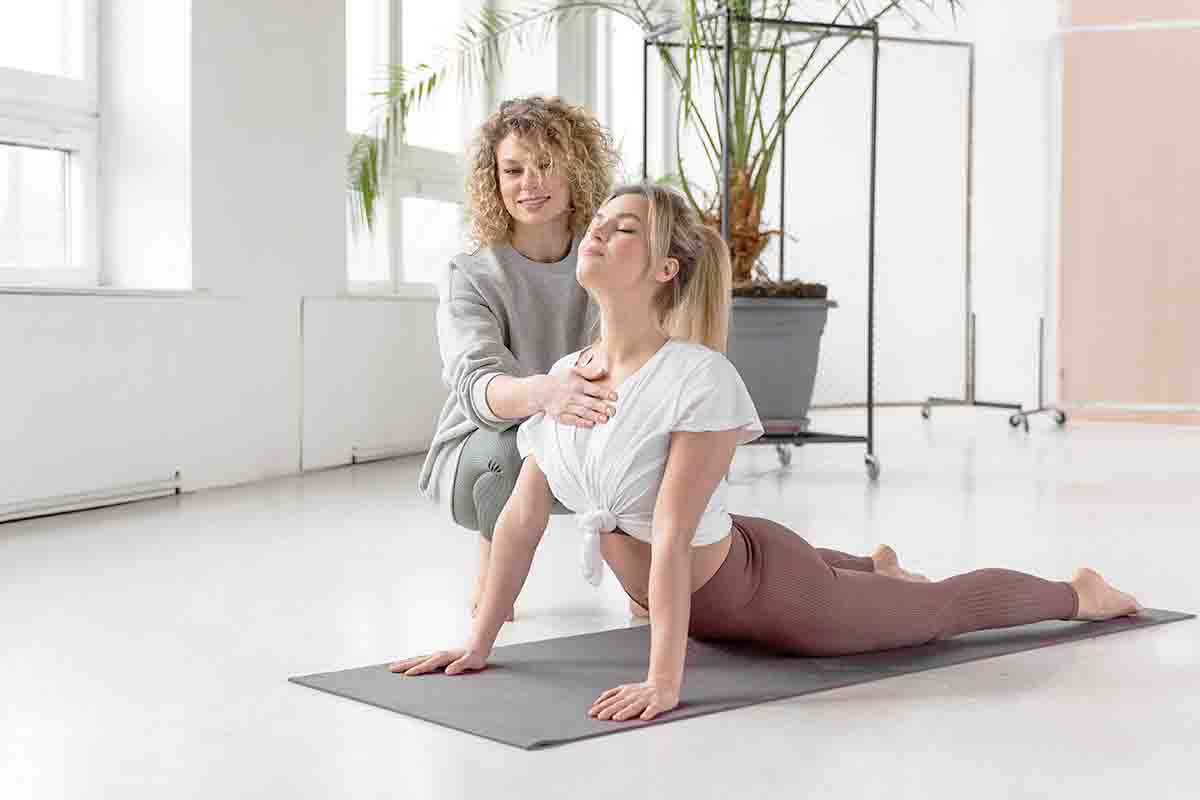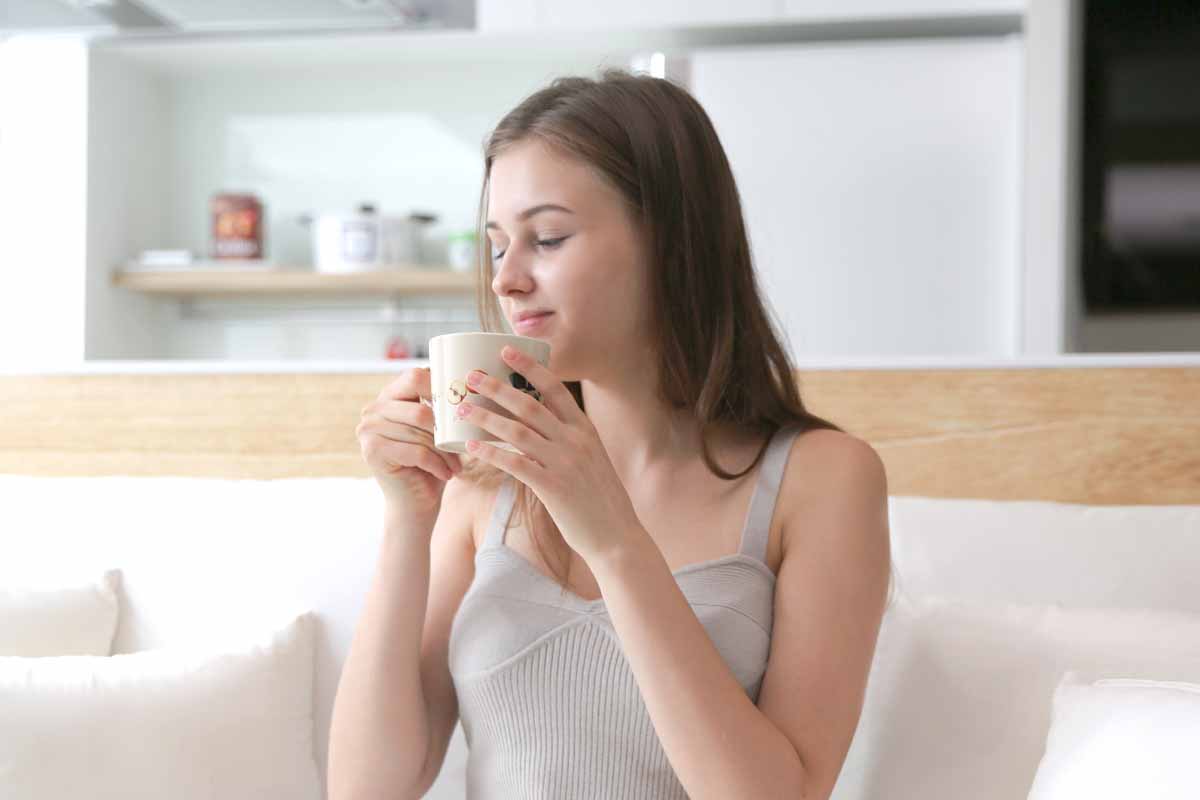There are different ways to practise self-healing to help you overcome your health issues. Discover how you can strengthen your self-healing techniques.
How to Practise Self-Healing at Home
Self-healing deals with the things or habits you do to improve your internal recovery system to heal from wounds, illnesses, or any imbalance you experience. As you practise self-healing at home, you see how your body improves every time to take a step toward recovering from cuts or bruises.
When you intentionally listen to your body, you ignite a change in every aspect of your life. It may be your physical wellness, mental and emotional well-being and even your spiritual well-being. A holistically healing person strives to acknowledge the challenges and obstacles and create something positive out of them.
In a nutshell, self-healing is simple.
Defining self-healing
Self-healing is a process that starts and ends with you. It's a process of facing the pain brought about by the trauma you faced in the past. These pain may manifest physically or emotionally. It would be best if you learned to move forward from your previous challenges to heal yourself fully.
One of the best ways to self-heal is to know and identify what triggers your trauma, depression, anxiety, and stress. These affect your mental well-being and could manifest physically through insomnia, chest pains, and even stomach pains.
Self-healing is not an instant process; listening to yourself is the first step you need to take. But, where and how do you start listening to yourself?
How do you practise self-healing?
The self-healing process sounds cliche for some people, but these words ignite something in each person to want to do this on their own. Some may find it easy, yet others find it difficult to start that process in their lives. The journey of self-healing begins with accepting the challenges within yourself and making it a goal to improve yourself holistically.
Self-healing techniques
There are different ways to start your self-healing journey. Some self-healing techniques will benefit your physical and emotional health. These tips can help improve your mood especially when you’re committed to adding these to your routine.
- Breathing exercises
time in your day that will allow you to practice your breathing. If you're new to this, you may begin
with five minutes, then gradually increase it as you feel necessary.
- 4-7-8 breathing for anxiety
This technique was conceived by a Harvard-trained medical doctor and founder of the Arizona Center for Integrative Medicine, Dr Andrew Weil, in 2015. Based on the pranayama breathing exercise practised during yoga sessions, many people use this technique to manage their stress and anxiety levels. - How to start practising the 4-7-8 breathing technique?
The 4-7-8 breathing activates the parasympathetic nervous system, which is responsible for our body's relaxation. When it's active, your body holds back the opposite system, the sympathetic nervous system, that's responsible for your stress response to specific triggers. Dr Weil points out that this technique is best done daily as a preventive measure for anxiety attacks and to lower stress levels.
- Find a quiet and comfortable place in your home. Make sure there are no distractions.
- Put your tongue behind the back of your top teeth.
- Exhale all the air around your tongue by opening your mouth.
- Close your mouth and then inhale for a count of 4, this time through your nose.
- As you hold your breath, count to seven.
- Then, exhale through your mouth for a count of eight. Create an audible sound as you exhale. You should feel that the air leaves your body as you exhale.
- Do this exercise for four rounds. Make sure to repeat the steps enumerated above.
With regular practice, this habit becomes an involuntary habit, and soon you'll notice that you'll be automatically practising this whenever your stress or anxiety levels elevate. Speed is irrelevant in this technique, as long as you follow the recommended breathing ratio.
As you practise this exercise, you will quickly observe how it changes you. Practising at least twice or thrice a day will help you alleviate and manage your stress and anxiety levels.
Deep breathing
This technique enables you to practice deep breathing exercises. When you experience stressful situations, your body makes a stress response known as the fight or flight response.
Nevertheless, deep breathing helps you relax, recharge, and boost your resiliency when facing different situations.
- How to practice deep breathing?
- Make sure your posture is straight. Sit on a comfortable chair and make sure your feet touch the floor.
- Place one hand on your stomach and your pinky finger above your belly button.
- Pay close attention to how your belly rises and falls.
- Notice that when you inhale, it feels like a balloon inflating. When you exhale, it feels like a balloon deflating.
- Now, place your other hand on your chest.
- Slowly inhale to the count of three.
- Exhale slowly to the count of three. Think of the work, and "relax as you do.
- Focus on how your diaphragm moves.
Lion's breath
This breathing technique helps you reduce tension and stress levels by stretching your entire face, jaw, and tongue. Pranayama is a yogic practise that revolves around various breathing techniques. Most of the time, you spend a great deal of time stretching your body in yoga but rarely on the face. This is where the lion's breath comes in. It may look unusual and silly, but it enables you to relax when you want to blow off steam. Not only does this help you manage anxiety and depression, but this also helps relieve asthma symptoms and stimulate your diaphragm and vocal cords.
- How to practice Lion's breath?
- Place your hands on your knees, straighten your arms, and extend your fingers. Your extended fingers represent the lion's claws.
- Inhale through your nose.
- Powerfully exhale and make a "ha" sound. As you exhale, make sure your mouth is wide open and stick your tongue out as far as possible, possibly reaching your chin.
- Try bringing your internal focus towards the centre of your forehead or the tip of your nose as you exhale.
- As you inhale, revert to your neutral face.
- Repeat the steps at least four to six times. If you have your ankles crossed, switch them halfway through your repetitions.
Activities
How do you feel about joining group therapy? You might feel intimidated at first, and that's okay. According to Ben Johnson, PhD, ABPP, a clinical psychologist and director of Rhode Island Cognitive Behavioral Therapy and Coaching, participants often feel surprised by how group activities benefit their self-healing journey. One of the best things about joining group activities is finding people who share the same struggles as you do and building rapport and support among them.
- What are the benefits of joining group activities?
- It helps you improve your social skills
- Guides you to love and teach yourself better
- Boosts your self-esteem and self-confidence
- It gives you support, especially when facing challenging situations.
So, what kind of activities can you join while focusing on your self-healing?

Taking yoga classes, you may relieve any tension by strengthening your body.
Yoga classes
The National Center for Complementary and Integrative Health defines yoga as an ancient practice of the Indian philosophy of promoting physical and mental health that started more than 4,000 years ago.
Yoga combines the mindful benefits of meditation with physical poses (also known as asanas). With yoga, you don't just train your muscles to face life's challenges, but also you're empowering yourself through your breath and mind to keep you grounded. The different yoga postures help you strengthen your body and align your muscles and bones, relieving any tension you experience.
Dance classes
Physical agility and strength improve as you move your body with the music. It helps you release all the negative energy and emotion that you have been keeping inside of you. It benefits a lot of people who are striving to overcome different physical and emotional challenges. As you move through the music, your body releases endorphins and oxytocin, which lift your mood and lower stress levels.
While trauma is deeply embedded in your body, it may be a sensitive topic to process and discuss. However, with dance, you could easily communicate it non-verbally and discover how to overcome and manage them. It's an excellent activity to help develop and strengthen your boundaries.
Dance Movement Therapy (DMT) helps you process different thoughts and sensations through movement. DMT is a certified form of therapy that helps you improve your self-healing process. With DMT therapists, your sessions become a safe space to process your feelings without feeling prejudiced. It's also a way to teach you how to react to specific triggers and situations.
Herbal drinks
Now, more and more herbal products are out in the market to help people like you manage your physical and mental well-being. It affects your digestive tract, appearance, energy levels, sleep quality, and more. With herbs, you quickly detox and cleanse your body to remove toxins that affect your mood and emotional well-being.
One of the most popular herbal drinks is tea. Aside from giving a calm sensation, it also improves how you perceive the world around you. Here are some herbal drinks to help you create a better self-care regimen.
- Turmeric tea is a robust anti-inflammatory and anti-oxidant that aids your body fight inflammation or even gastrointestinal issues.
- Chamomile tea - It contains flavonoids that play an essential role in this herb's medicinal effects. It reduces menstrual cramps, lowers blood sugar, prevents osteoporosis, treats cold symptoms and mild skin conditions, and helps prevent cancer.
- Peppermint tea -It is one of the world's most popular herbal teas that support digestive tract health. It is good for reducing body pains and relaxing spasms.
Improving your sleep hygiene
It means healthy sleep habits. Good sleep hygiene is vital because it boosts your physical and mental well-being and overall wellness. Your daily habits affect your sleep quality. Choosing the right foods, beverages, schedules, routines, and other activities affect your sleep hygiene.
- How to improve your sleeping habits?
- Create a sleep schedule and adhere to it. Ensure to get at least 7-8 hours of sleep every night.
- Reduce gadget usage at least two hours before your sleeping time.
- Eat a proper diet. Remember to avoid eating two hours before you sleep. Refrain from drinking caffeinated drinks late in the afternoon or early evening.
- Insert some exercise routines before your bedtime.
- Try putting up some dark curtains to induce sleep.
- Play some lo-fi music or classical music to relax your mind.
- Practice some breathing exercises.
- Is there some sleeping equipment you can invest in?
Yes! To improve your sleep quality, you can invest in a good mattress or a heating pad to help you induce sleep better.
A good bed can't instantly improve your sleeping quality, but it gives you a more comfortable experience. It helps you fall asleep easier. Wellcare's Cell Heating Pad mimics the cell's shape to show that everyone needs to slow down. It enables you to focus on breathing techniques and overall self-care. On cold nights, it gives you warmth to help you fall asleep easier without struggling to hold onto your blankets.
The perfect combination of cosy sheets and heat flow gives you a sense of peace and fulfilment.
Grounding techniques
When you hear grounding techniques, what comes into mind?
Grounding techniques help you stay in the present and distract yourself from anxiety or other mood disorders. These techniques help create a safe space to calm yourself slowly. People struggling with anxiety, depression, stress, and post-traumatic stress disorder (PTSD) benefit greatly from these practices.
- What are the different types of grounding techniques?
- Physical
- Mental
- Soothing grounding
Take a look at the table below for some grounding techniques.
|
Physical |
Mental |
Soothing grounding |
|
Breathe intensely. |
Play a memory game. |
Remember your support system (friends, family, partner). |
|
Soak your hands in water. |
Think of categories. |
Cuddle your pet. |
|
Take a short walk outside. |
Recite your favourite poem or quote. |
Make a gratitude list. |
These are some grounding techniques you can practise when you feel anxious, stressed, or triggered by a traumatic event. However, it's best to seek professional help if the symptoms worsen or happen frequently.
Love yourself
Getting comfortable with yourself might be a life-long challenge, especially if you don't love yourself.
As you find love from other people, you tend to forget to check inwards and love yourself. You might feel frustrated if someone you care about leaves you. It breaks your heart and even your self-esteem. How do you love yourself more?
Self-love starts when you appreciate yourself. It may be spoiling yourself with good food, buying new clothes, or even exercising at home. It is not defined as the absence of negative self-talk but as taking care of yourself despite everything you've been through. It's learned and cultivated through small intentional habits that connect.
"If a close friend was having a tough time, there's no way we'd speak to them the way we speak to ourselves in our mind," - said Andy Puddicombe, Headspace co-founder and a former Buddhist monk.
- How to practice self-love?
Self-love often shows when you allow yourself to find your inner peace despite what's happening around you. It goes beyond the physical comfort you give. When you validate and nurture yourself, being genuine in your relationship with others becomes more effortless. - Here are some tips on practising self-love:
- Thank yourself for the progress you make, no matter how small it may be. Progress is progress.
- Create boundaries. It could start by saying no to invites if you don't feel comfortable going out or hanging out with other people. Don't feel bad about it because it's okay to say no.
- Know that not everything may go your way, and that's okay. Don't blame yourself for anything wrong that happens.
- Face your negative thoughts and emotions. Don't use a band-aid solution, as it will create a more significant roadblock in the future.
- Refrain from comparing yourself to other people.
Tools to help you improve your self-healing
When you fail to take care of yourself, it affects almost everything in your life. You might feel burnt out at work or school if you fail to put yourself first. However, creating a self-care routine has been more accessible these days with the help of apps and activities you can easily do. Your self-care regimen may start with a bubble bath, massage, or even a simple 5-minute walk outside. Doing this helps you prioritise yourself.
One of the first things you need to do is dedicate some time to self-care. You can block a schedule in your calendar and set the notifications to get reminders that it's time for some me-time.
Since it's a fast-paced world, we listed some tools and apps to help you improve your self-healing routine.
Cell heating pad
A cell heating pad is used before sleeping as a sleep ritual. We recommend using it during your leisure time after work, before bed, or in the afternoon on weekends. Create a time-space for yourself, let go of all the trouble, take a break, slow down your breathing tempo, feel your breath corresponding to the warm flow from the product, and enjoy the tranquillity and pleasantness.
A cell heating pad is also like a visual reminder to rest at proper times whenever you see a cell-shaped item (cell heating pad). With continued use, your body will be conditioned to recall the relaxation right when you feel its soothing, warm texture. The body gets warmed when the product touches the human body via the 4D warm flow, and the mood is brought to peace.
Simply place a cell heating pad on your abdomen, waist, hands, thighs, and shoulders. The warm flow goes through the body, building up the slow relaxation. In the meantime, the parasympathetic nerves are replaced by the sympathetic nerves.

You can release tension and unpleasant thoughts by writing.
Journals
Journaling improves your wellness by writing down what transpired during the day. It helps let go of the stress and negative thoughts that you feel. According to some studies, creative journaling or writing benefits you as you process your memories, aspirations, experiences, and dreams. Expressive writing soothes stress, boosts your immune system, and increases resilience.
What kind of journaling can you do?
- Line a day journal
Keeping a journal helps you become more grounded, tranquil, and relaxed. Why not spend some time journaling and reflecting on how your day went in a more meditative way? - Bullet journaling
Bullet journals may contain your daily tasks and chores you need to do and expand to track your progress with your goals and habits. You may also create a financial budget tracker to help you monitor and manage your finances
-jpg-1.jpeg)
You feel more at ease and less stressed while coloring some papers.
Colouring sheets
Do you notice yourself relaxing while colouring some sheets? According to experts, doing colouring activities help you become more mindful and focused. You pay attention to staying inside the lines and not going overboard onto the other parts. This enables you to remain present in the moment. More often than not, you tend to think of other things while doing something else, which triggers anxiety.
Stress, anxiety, and depression may give some physical symptoms like fatigue, body pain, and even insomnia. Colouring may become a fruitful hobby that helps you manage these symptoms. But, it isn't a permanent cure for these disorders.
- Some examples of colouring activities:
- Colouring mandala sheets
- Painting
- Doodling
- Sketching
Conclusion
To improve your well-being, you need to prioritise yourself first. You can start by creating small habits to enhance your self-healing at home. Incorporate breathing exercises,, mindful eating, and physical activities to help you boost your self-morale. As there are free apps, colouring sheets, and journaling prompts that you quickly access on the internet, investing in good beds and heating pads helps you get good sleep. This, in turn, boosts your mood and makes you feel good about yourself.
Adhering to these habits may be challenging. That's why it may be good to find someone to be your accountability partner that will encourage you to continue on your journey no matter how painful it may be.
Are you ready to take your self-healing habits to a whole new level? Get one of our heating pad and achieve the inner peace you long for.


.png?width=512&name=united-kingdom%20(1).png)




